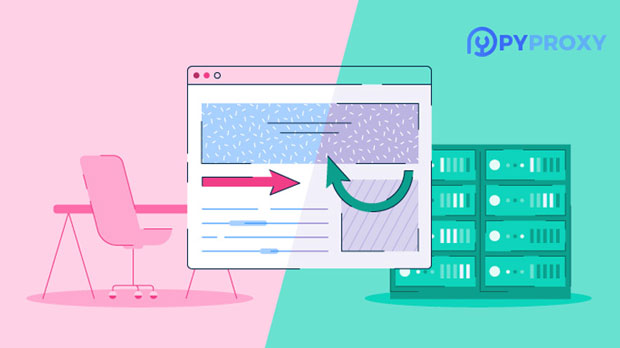When purchasing HTTPS proxies from proxy sites, users often face a range of pitfalls that can lead to poor performance, security risks, or even wasted resources. Many buyers focus solely on price, overlooking critical aspects such as the proxy provider's reliability, transparency, and service features. The lack of knowledge about the specific type of proxy required for their use case can lead to dissatisfaction and wasted time. This article will explore some of the common pitfalls users encounter when buying HTTPS proxies from proxy sites and provide practical advice to help ensure a successful purchase. 1. Focusing Too Much on Price Over QualityWhen buying proxies, it is tempting to choose the cheapest option available, but this often leads to serious issues in terms of speed, security, and reliability. Low-priced proxies may be sold by providers who do not maintain their infrastructure properly, resulting in slow speeds and high failure rates. Additionally, some cheap proxies are sold in bulk and might be shared among many users, reducing their effectiveness. Users should prioritize proxy performance, security features, and the provider's reputation over simply opting for the lowest price.2. Lack of Transparency About Proxy SourceAnother pitfall is the lack of transparency regarding where the proxies come from and how they are sourced. Some proxy providers may purchase proxies from unreliable or shady sources, which can result in IPs being blacklisted or flagged by websites. A proxy provider that cannot clearly explain its sourcing process or the origin of its proxies should be avoided. Users should always inquire about the proxy’s origin to ensure they are not being sold compromised or risky IPs.3. Ignoring the Proxy Type and Use CaseThere are several types of HTTPS proxies, such as residential, data center, and mobile proxies. Each type has specific use cases, and it is crucial to match the proxy type with the intended use. For example, residential proxies are better for tasks that require high anonymity and a natural browsing experience, while data center proxies are faster but may be more easily detected. Users should carefully assess their requirements before purchasing proxies to ensure they select the right type for their needs.4. Overlooking Privacy and Security FeaturesWhen buying HTTPS proxies, many users overlook the importance of privacy and security features. Proxies serve as intermediaries between users and websites, which means that the proxy provider can potentially log sensitive data, including browsing activities and login credentials. It is essential to choose a proxy provider that prioritizes privacy and does not log user data. Additionally, some proxies may have weak encryption, which could expose sensitive information to hackers. Ensure the proxy provider offers strong encryption and a clear privacy policy.5. Not Checking for IP Rotation and Session PersistenceFor users who require multiple IP addresses for their tasks, such as web scraping or social media management, the ability to rotate IPs regularly is crucial. Some proxy services may not offer automatic IP rotation, meaning users could face detection by websites for making repeated requests from the same IP. Conversely, session persistence is important for activities that require maintaining the same IP address for a certain period. Users should check if the proxy provider offers both IP rotation and session persistence based on their specific needs.6. Not Considering Customer Support and Service Level Agreements (SLAs)Customer support is often a forgotten aspect when selecting a proxy provider. Users should ensure that the provider offers robust support, especially if they encounter issues such as IP bans, downtime, or connection problems. It is essential to verify the availability of support channels (email, live chat, etc.) and response times. Additionally, a Service Level Agreement (SLA) can be a useful document that outlines the provider’s commitments regarding uptime, performance, and issue resolution. Without clear SLAs, users may face difficulties in holding the provider accountable.7. Failing to Test Proxy PerformanceMany buyers make the mistake of purchasing proxies without thoroughly testing their performance. A proxy that promises high speed may not live up to expectations, especially when dealing with tasks that require consistent performance, such as online gaming, financial transactions, or large-scale web scraping. Users should always request a trial period or demo before committing to a full purchase. This will help assess factors such as speed, connection stability, and response times.8. Unclear Terms of Service and Refund PoliciesBefore purchasing HTTPS proxies, it is essential to carefully read the provider's terms of service and refund policies. Some proxy providers offer vague or unclear terms that may make it difficult to resolve disputes or request refunds if the service is not up to par. It is crucial to ensure that the provider has a fair and transparent refund policy, especially if the proxies do not meet the buyer's expectations. Users should also check if the provider offers any guarantees regarding uptime and performance.9. Not Considering Long-Term ScalabilityScalability is an important consideration when purchasing proxies, particularly for businesses or users who plan to scale their operations. Some proxy providers may offer limited resources or restrict the number of proxies you can use, which can hinder future growth. It is essential to choose a provider that can accommodate increasing demands, whether it’s more proxies, better speeds, or additional features. Failing to consider scalability can lead to frustrations and additional costs down the road when the initial service no longer meets your needs.10. Trusting Unreliable Reviews and TestimonialsOnline reviews and testimonials can be useful when choosing a proxy provider, but they are not always reliable. Some providers may post fake reviews or incentivize customers to leave positive feedback. To avoid this pitfall, users should look for independent and verified reviews, preferably from trusted sources. It is also a good idea to seek recommendations from online communities or forums where users share their real-world experiences.ConclusionPurchasing HTTPS proxies from proxy sites can be a complex process, but by avoiding these common pitfalls, users can ensure they get a service that meets their needs and expectations. By focusing on quality over price, understanding the specific proxy requirements, and considering factors like security, customer support, and performance, users can make informed decisions and avoid wasting time and money. Always do thorough research, test the service, and ensure the provider offers clear terms and scalable solutions to ensure a successful and satisfactory proxy experience.
Jul 22, 2025


































































